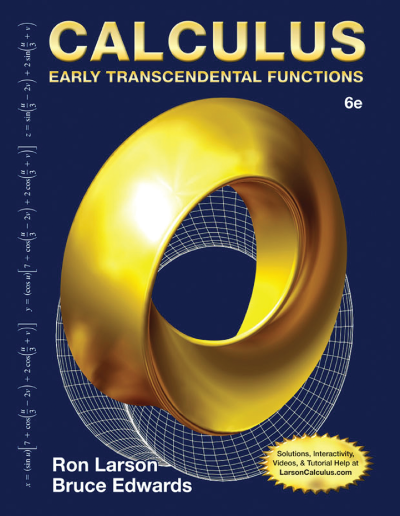Christian Huygens
(1629 – 1695)
Christian Huygens, generally considered the leading mathematical physicist of his time, was born on April 14, 1629, in The Hague, The Netherlands. The Huygens family was prominent and well respected. Christian’s father, Constantijn, was secretary to the Dutch prince Frederick Henry; Christian’s brother, also named Constantijn, followed his father in service to the royal family.
The elder Constantijn was a brilliant man who excelled as an artist, poet, and composer, but who also possessed sufficient scientific knowledge to earn the respect of his friend, René Descartes. Constantijn was deeply committed to the education of his two sons and taught them at home until Christian reached the age of sixteen. By then, Christian had learned to play the harpsicord and the lute; was fluent in Latin, Greek, French, and Italian; and was conversant in mechanics, logic, mathematics, and geography.
Christian originally intended to be a diplomat and to that end enrolled at the University of Leiden to study law. Despite his stated ambition, however, his primary interest even then appears to have been mathematics. Lectures on classical mathematics and the work of Fermat and Descartes gripped Christian’s imagination and led him to devise experiments of his own. In this, Christian was encouraged both by his father and by Descartes himself.
By August 1649, Christian had determined to devote himself to science and mathematics, and abandoned his study of law. Supported by his father, Christian spent the next three years exploring the properties of quadratures, cubatures, and parabolas. Huygen’s many influential papers on these subjects attest to the productivity of this period.
In 1655 Christian, with his brother Constantijn, invented a means of grinding lenses that greatly increased their magnifying power. Christian constructed a telescope incorporating the improved lenses, and soon discovered the Orion Nebula and the first of Saturn’s many satellites. He also determined that Saturn’s mysterious appendages were, in fact, rings.
Huygen’s accomplishments were widely revered by Europe’s scientific and mathematical communities. In 1666 King Louis XIV, seeking to bolster the glory of his court, lured Huygens to Paris with the offer of a generous pension. Huygens accepted the Sun King’s invitation, and this led to one of history’s most fateful encounters: It was in France, in 1672, that Huygens met Gottfried Wilhelm Leibniz. Inspired by Huygens, Leibniz determined to dedicate his phenomenal genius to the study of mathematics.
Huygen’s contributions to our understanding of the laws of motion, centrifugal force, and the nature of light earned him a prominent position in the history of science and mathematics; however, his invention of the first successful pendulum clock is generally considered his greatest achievement. Prior to the appearance of Huygen’s timepiece, clocks were one-handed and indicated only the hour. Huygen’s elegant, two-handed pendulum clock was an enormous advance. Huygens designed the clock to facilitate his research in astronomy, though the value of an accurate timepiece to virtually any scientific endeavor cannot be overestimated.
The significance of Huygen’s pendulum clock was further heightened by an explanatory work, the Horologium oscillatorium. Published in France in 1673, this five-part treatise elucidated the principles of mathematics and physics that governed the clock’s construction, and suggested new avenues of scientific research for succeeding generations.
By 1681, the increasingly Catholic climate in France prompted Huygens, a Protestant, to return to the Netherlands. Huygens never married; all his time and attention was dedicated to scientific and mathematical investigation. He had the satisfaction of seeing Leibniz, his only student, rise to prominence as a mathematician. A staunch proponent of the calculus as developed by Leibniz, Huygens was his protégé’s ally in Leibniz’s infamous dispute with Newton.
Huygen’s final months were marked by increasingly frequent bouts of illness. He died on July 8, 1695, at the age of 66, at his home in The Hague.
Links
http://www-history.mcs.st-andrews.ac.uk/Biographies/Huygens.html
http://www.maths.tcd.ie/pub/HistMath/People/Huygens/RouseBall/RB_Huygens.html
References
- Asimov, Isaac. Asimov’s Biographical Encyclopedia of Science and Technology. Garden City, New York: Doubleday & Company, Inc., 1972.
- Ball, W. W. Rouse. A Short Account of the History of Mathematics. 1908. Reprint. New York: Dover Publications, Inc., 1960.
- Boyer, Carl B. A History of Mathematics. 2d ed., rev. Uta C. Merzbach. New York: John Wiley & Sons, Inc., 1991.
- Dunham, William. Journey Through Genius: The Great Theorems of Mathematics. New York: John Wiley & Sons, Inc., 1990.
- Eves, Howard. An Introduction to the History of Mathematics. 6th ed. Fort Worth: Saunders College Publishing, 1992.
- Gillispie, Charles Coulston, ed. Dictionary of Scientific Biography. Vol. VI. New York: Charles Scribner’s Sons, 1972.
- Hollingdale, Stuart. Makers of Mathematics. London: Penguin Books, 1989.
- Struik, Dirk J. A Concise History of Mathematics. New York: Dover Publications, Inc., 1987.











